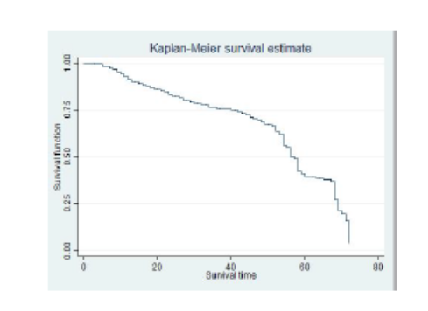


Indian Journal of Science and Technology
DOI: 10.17485/IJST/v15i34.1073
Year: 2022, Volume: 15, Issue: 34, Pages: 1675-1682
Original Article
Dagnaw Amare Mequanente1, Pilavadisamy Srinivasan2*, G Mallika3, Peer Mohamed Thamimul Ansari4, Mequanent Wale5
1Institute of Public Health and Biotechnology, University of Gondar, Ethiopia
2Koneru Lakshmiah Education Foundation, Deemed to be University, Andhra Pradesh, India
3Department of Commerce, Vyasa Arts & Science Women’s College, Vasudevanallur, Tamil Nadu, India
4Department of Hotel Management, University of Gondar, Ethiopia
5Department of Biostatistics, University of Gondar, Ethiopia
*Corresponding Author
Email: [email protected]
Received Date:18 May 2022, Accepted Date:03 August 2022, Published Date:30 August 2022
Objective: To assess the prevalence and determinants of opportunistic infections among HIV-infected children receiving antiretroviral medication (ART) at the University of Gondar’s comprehensive specialty hospital. Methods: A retrospective cohort research was undertaken at the University of Gondar comprehensive specialized hospital between January 11, 2017, and January 10, 2022. The study included 389 HIV-positive children on antiretroviral therapy. A data extraction form derived from the ART entry and follow-up forms was used to collect data from the charts of HIV-infected persons. The data was entered using Epi-dataTM Version 4.5, and the data was analyzed using StataTM Version 16. ofBivariate and multivariate semi-parametric and parametric regression models were fitted to identify risk factors of opportunistic infections. The Kaplan Meier survival curve was used to calculate the time gap between opportunistic infections. Result: Between January 11, 2017, and January 10, 2022, 389 HIV-infected children started antiretroviral therapy (ART). The overall Incidence of opportunistic infections was 4.2 (95 percent CI 3.75 to 4.46) per 100 person-year observation during the follow-up period, which lasted a median of 67 months (IQR=58-76 months). The most common OI at follow-up was bacterial pneumonia, which was 13.5 (95 percent CI: 10.29,17.7). Children with baseline CD4 200 cells/l counts (AHR= 2.05 (1.40, 3.00), baseline Hgb level of 10 g/dl (AHR=5.87 (3.97,8.69), ever taking IPT (AHR=1.71(0.94, 3.11), and HIVinfected children with fair/poor ART adherence (AHR=1.41(0.90, 2.19) were all significantly linked to the development of opportunistic infections. Conclusion: In this study, the rate of opportunistic infections among HIV-positive children was quite low. OIs were significantly associated with characteristics such as baseline CD4 count, Hgb level, adherence to ART, and use of IPT. We feel that early screening and treatment of OIs should be explored as a result of dueto the aforesaid findings above. Additionally, adherence assistance through phone calls and case managers might be increased. Furthermore, at each follow-up examination, children with severe immunodeficiency and advanced disease stages at the time of ART initiation should be closely monitored and extensively screened for the occurrence of OIs. Furthermore, at each followup examination, children with severe immunodeficiency and advanced disease stages at the time of ART initiation should be closely monitored and extensively screened for the occurrence of OIs. Additionally, adherence assistance through phone calls and case managers might be increased.
Keywords: Children; Antiretroviral therapy; HIV; Opportunistic infections; Ethiopia
© 2022 Mequanente et al. This is an open-access article distributed under the terms of the Creative Commons Attribution License, which permits unrestricted use, distribution, and reproduction in any medium, provided the original author and source are credited.
Published By Indian Society for Education and Environment (iSee)
Subscribe now for latest articles and news.